Insights
RCS for retail and ecommerce: Richer messages, better results
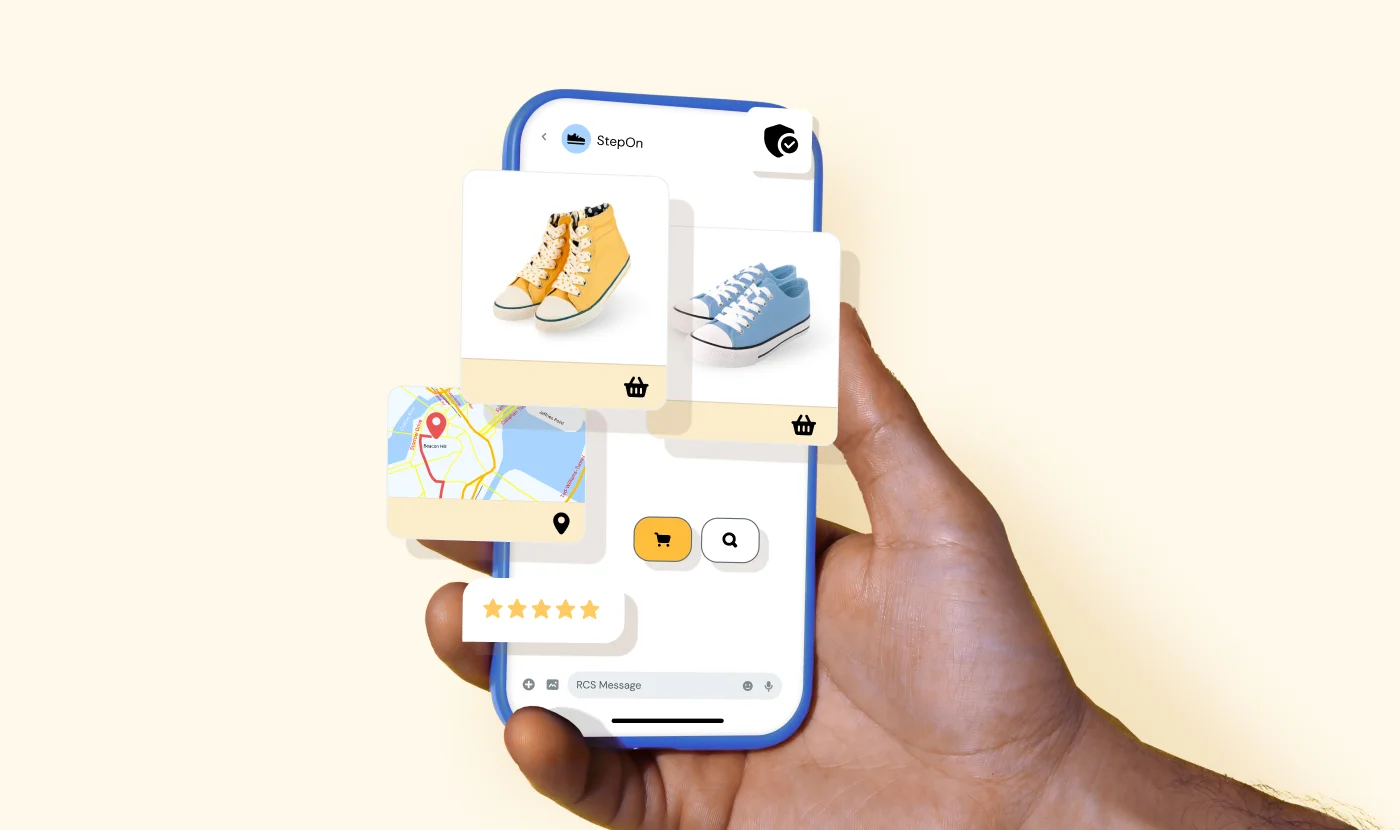
Insights

We’ve got to hand it to today’s retailers: Keeping up with changing shopper expectations takes constant focus. It means constantly knowing what’s next, both in what you sell, and how you sell it. And your customer communication strategy can make the difference between a loyal customer and a lost one.
To get a clearer picture of where retail communication stands today, Sinch surveyed over 2,800 global consumers and 400 U.S. retail business leaders as part of our 2025 report, The state of RCS customer communications. Perhaps unsurprisingly, consumers often said they want speed, personalization, and relevance in every message.
For retailers, though, there are a few common challenges to getting there. Budgets are tight – and integration is tough. They may fully intend to meet customer expectations, but the execution is where teams get stuck.
Here’s the good news: The same research also points to a clear opportunity for retailers: Rich Communication Services (RCS) as a way to connect in a quick, personal, and branded way in the native mobile messaging inbox. And according to our research, it’s one of the most promising ways to drive engagement in retail.
The 2025 State of customer communications survey surfaced three major customer communication challenges retailers face:
Meanwhile, customers are asking for more:
And who can blame them? They’re used to personalization in their lives, especially in retail and ecommerce, where the best brands already do it.
This is exactly the kind of pressure retailers are feeling, and the opportunity RCS is built to meet. At NRF 2025: Retail’s Biggest Show APAC, Neil Patwardhan, SVP of Sales for APAC at Sinch, explained how RCS helps brands rise to this challenge.
“If you think about the future of conversational messaging with your customers, the retail market and the retail landscape is evolving at a rapid rate. And more and more customers are wanting to engage on the channel they want to be reached on.”

Retail marketers today are caught between high customer expectations and disconnected tools, cost pressures, and difficulties in delivering personalization. And even the best messaging strategies can fall short if they don’t meet customers’ expectations.
RCS offers the potential to reshape how brands connect with their audiences, and, when used strategically, can lead to reduced cart abandonment, higher conversion rates, and boosted sales. Among retail leaders familiar with RCS, 53% believe RCS will be a game-changer for customer communications. Here are the top three ways they believe they’ll benefit from RCS:
Despite these benefits, retailers were actually the least enthusiastic among the industries we surveyed to describe RCS as game-changing, and the least likely to have already adopted it. This means that RCS could be a powerful way for early adopters to stand out from the competition.
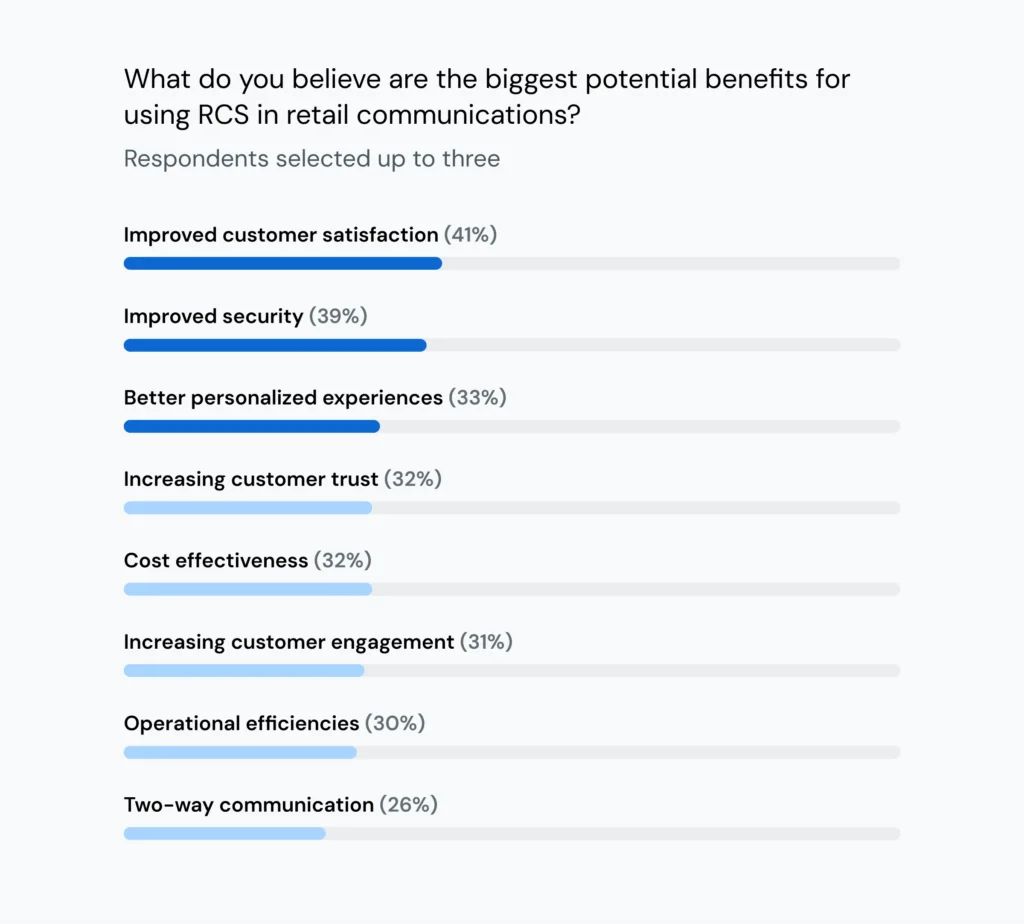
And once you can see what RCS can do, it’s easy to understand why. RCS upgrades SMS from basic text messaging to having capabilities like:
That could be why some marketers have seen campaign results with a 100% increase in click-through-rate compared to SMS, or 200% increases compared to email.
Let’s take you through a few ways brands have used RCS to improve ROI and make customers feel extra special.
RCS helps you make promotions more personal. Our 2025 consumer survey found that more than 70% of consumers believe personalized shopping recommendations from an AI chatbot could be helpful, so clearly you shouldn’t rely on a one-size-fits-all approach.
With RCS, you can curate a personalized shopping experience for every customer. This could look like triggering an offer based on their recent purchase or browsing behavior, adding a product carousel, and having a few buttons for them to have a conversation with a bot.
And it works. Picard, a French frozen food retailer, used RCS and a chatbot to help customers plan their holiday meals based on a budget, diet, and cooking time. Bon appétit!
Watch the video to learn how food retailer Picard used RCS to create an interactive catalog their customers could use to imagine their holiday menus.
The result? A click-through rate that was three times higher than Rich SMS and 10% more website redirections.
Pro tip: Sinch Engage is a ready-to-use business messaging platform that’s simple enough for small teams and powerful enough for enterprises to get started with RCS straight away. Learn about RCS in Sinch Engage.
Imagine you’re sitting on the train or relaxing at home, browsing through your messages. Suddenly, an RCS message arrives from your favorite, trusted brand and includes a showcase of their latest products in a dynamic catalog.
RCS lets retailers turn messaging into a mini storefront, complete with rich, swipeable carousels with images and clickable options that can be browsed from the comfort of wherever someone happens to be browsing.
ATOL, a French optician chain, used RCS to guide their customers through purchasing new eyeglasses and book in-person appointments at their stores. As part of their campaign, their customers could visualize their chosen eyewear digitally before visiting a store or making a purchase. Talk about a great customer experience!
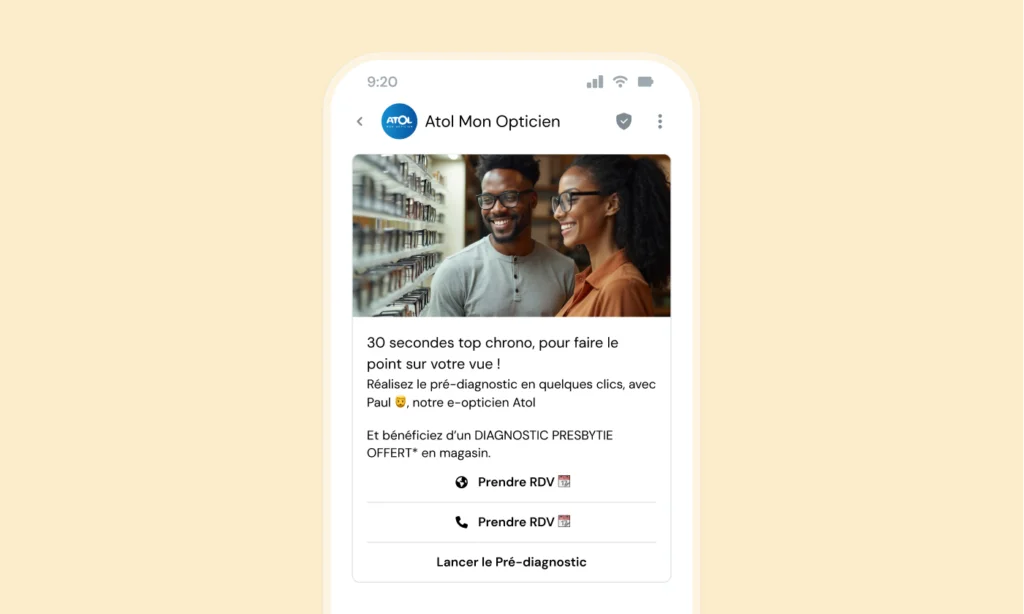
A/B testing showed how powerful their strategy was, with a 5x higher click rate and 99% more in-store appointment conversions compared to Rich SMS.
Abandoned cart recovery is one of the highest ROI plays in e-commerce… if you do it right. In our 2025 survey, 54% of consumers said they preferred abandoned cart notifications as an RCS message over SMS or MMS – probably because of the branding, buttons, and carousels that you can include in the message.
Cdiscount, a major French e-commerce platform, offers a great example. They used RCS to send customers rich holiday offers and deals that included images, videos, and guided responses in their messages.

Thanks to their RCS campaign, Cdiscount saw a 9% increase in average basket size as compared to previous campaigns.
RCS helps brands show up in the moment with messages that feel helpful, relevant, timely, and easy to act on.
Today’s shoppers want to stay informed, and they want it to be easy. Our survey found:
And RCS helps brands meet those needs in a super interactive way. Right after a customer checks out, you can send them a branded, visual message confirming their order. You could include product images, their name, and even a map showing the delivery route or a countdown to the expected arrival time.
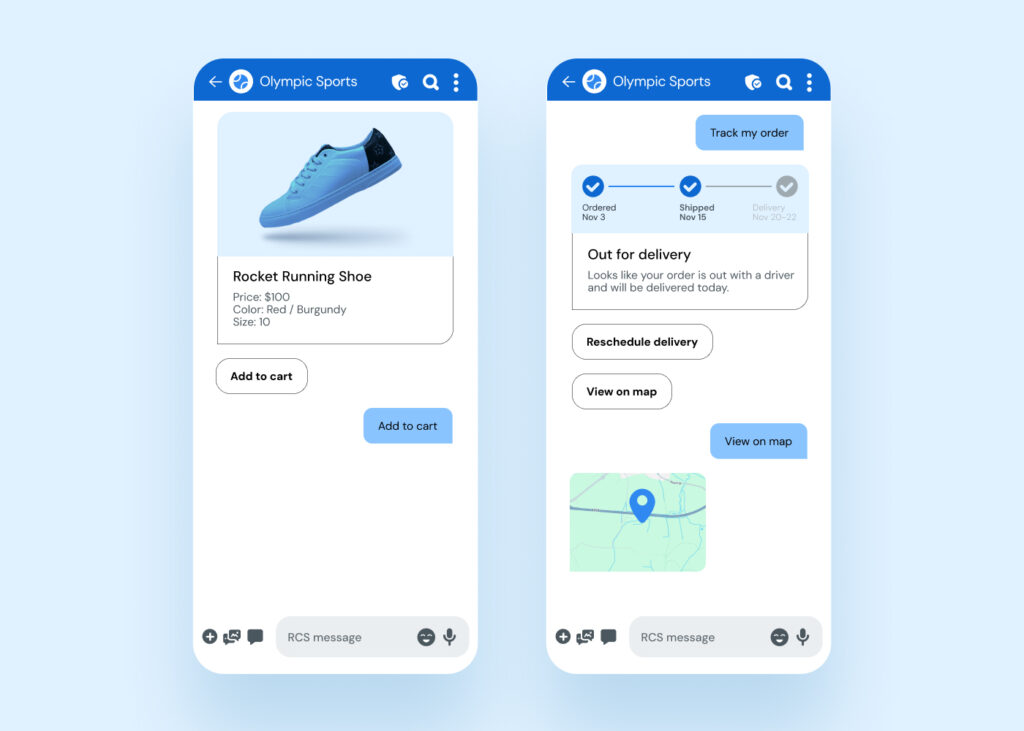
After someone makes a purchase, they will be eager to hear from you! RCS lets you show them this information in a visually appealing way that feels easy to act on.
Loyalty is earned in every message you send to your customers. For nearly 54% of consumers we surveyed, personalized rewards and loyalty messages were the ones that matter most! These kinds of messages are personal by nature because they connect directly to what your customer’s already invested in.
RCS loyalty programs can be simple, but powerful. Think:
Here’s some inspiration to help you create an RCS loyalty program: Citadium, a fashion retailer, wanted to improve revenue during the busy Black Friday period. They had used SMS in years past, but this time, they turned to RCS to offer their customers rewards and discounts.
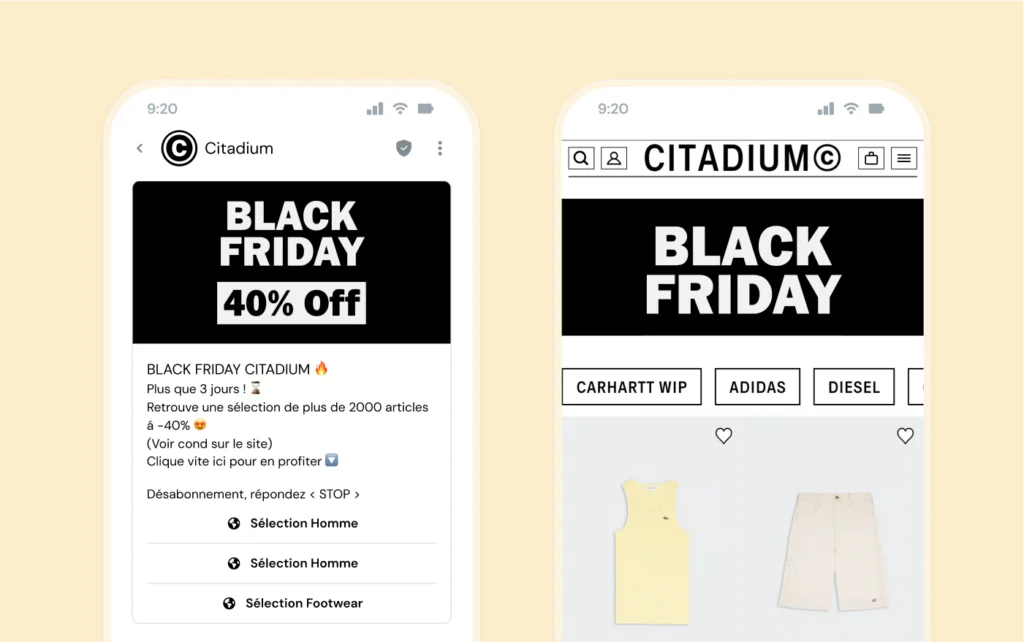
Their campaign had impressive results, with a 22% increase in conversions and an 85% engagement rate! Particularly effective for Black Friday marketing initiatives, RCS lets retailers connect and interact with customers.
Of course, loyalty is about more than discount codes. A good or bad customer service experience can make or break how loyal your customers are – especially because in 2025, fast, accessible support is what consumers expect.
And the vast majority of retailers know this, with 96% of retailer leaders we surveyed saying they use conversational commerce in some way:
This is where AI and real-time messaging comes in. When connected to messaging channels, AI can give customers quick, clear answers when they need them most.
RCS supports this with two-way, branded messaging that lets you:
The bottom line: When something goes wrong, your customers should be able to turn to your messaging channels as a quick, easy path to resolution. In turn, you’ll earn their loyalty.
Bonus: Our survey found that younger consumers are most comfortable working with an AI-powered solution for support, with 72% of Gen Z and 59% of millennials saying they were comfortable.
Consumers expect more from retailers. That’s been true for a while. But what’s changed is how much easier you can meet their expectations if you’re using the right tools and channels.
Nearly 90% of retailers plan to invest in customer communications in 2025. In the U.S., 35% of retailers we surveyed said they plan to invest in RCS for Business, building on the 26% who are already using it to create more engaging customer experiences. So if you’re considering new ways to connect, why not invest in something with proven results?
RCS gives retail marketers a modern way to connect, from promotions to support, right in the native mobile messaging inbox customers use every day.
And with Sinch Conversation API, you can deliver those experiences across channels without reinventing your workflow, so you can focus less on the tech and more on providing the best customer experience across the entire customer journey.
Want the full picture? Check out the full State of RCS in customer communications report to see where your retail peers are headed, and how to stay ahead.